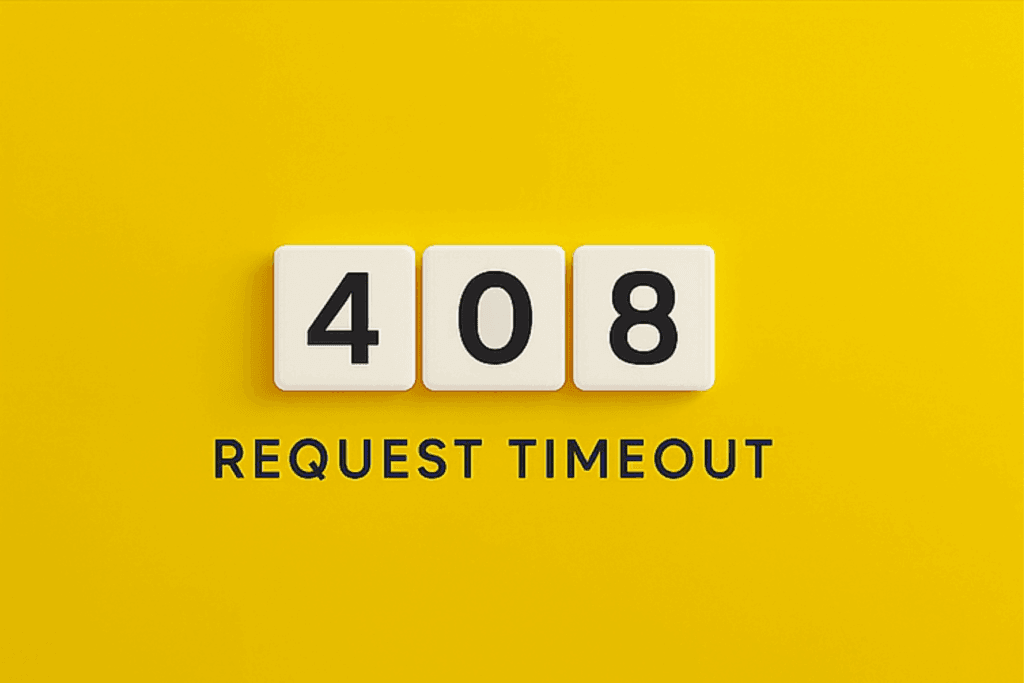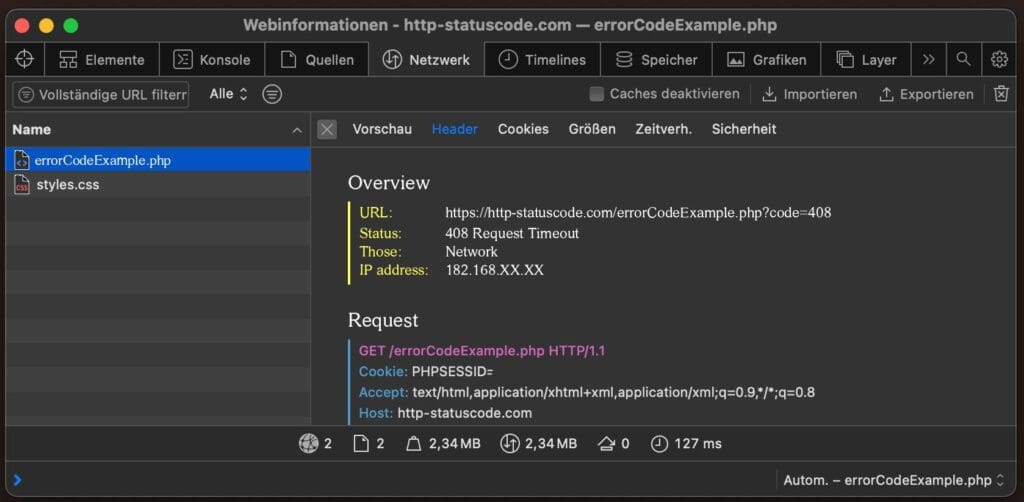
Sometimes it all takes just a little too long. You make a request to a server, but the server waits ... and waits ... and then decides to give up. You get no response, but an error message: 408 Request Timeout.
The server did see the request, but no complete data arrived within the expected time. No network error, no wrong URL, just: too late.
The http 408 error indicates that the client was not fast enough in sending the request, causing the server to terminate it.
In many cases, as a user, you don't notice much. The browser tries again, or still loads the page. But in APIs, scripts or slow connections, the 408 http error can come in hard.
What happens when a 408 error occurs?
The 408 status code is part of the 4xx series: errors on the client side. In this case, the client did make contact, but took too long to send the full request.
Every server has a certain timeout set. For example, if you send a POST request, but the body of that request never arrives, or arrives much too slowly, the server eventually decides: we'll stop this.
The error message you then get is:
HTTP/1.1 408 Request Timeout
Often the server sends along a suggestion that you can try again later. So it is not a permanent error, but rather a failed attempt due to delay.
When do you see a 408 http error?

The probability of a 408 increases at:
- Unstable or slow networks
- Large payloads not shipped on time
- Mobile connections or poor coverage
- Clients that get stuck for some reason before completing the request
In browsers, it does not often appear as a visible error message. Usually the browser repeats the request automatically. But in API clients, log files or monitoring tools, you will see the 408 appear.
Load balancers and reverse proxies can also return an http 408 if they have to wait too long for data from the client.
How do you know it's a 408?
In browsers, a short message sometimes appears like:
408 Request Timeout
Your browser didn't send a complete request in time.
In tools like curl or Postman, you can see the status code directly. And in your backend logs, you'll find lines with:
status=408 response_time=30.002
The exact notification may vary from server to server. Apache, Nginx, Varnish or a cloud proxy each give their own variant. What they have in common: they wait, but not endlessly.
What can you do about a 408 error message?
The solution is often in improving timing, either on the client side or in the infrastructure.
- Verify that your client sends the request completely and in a timely manner. For scripts or API calls, an error in the sending process can cause delays.
- Reduce payload size. Large JSON objects or files cause timeouts faster.
- Adjust the timeout settings if you have control over the server. For example, in Apache via Timeout, in Nginx via client_header_timeout.
- Ensure stable network traffic, especially with mobile applications or IoT devices.
- With load balancers or proxies: check that they are not truncating too aggressively.
Please note that a 408 error does not mean that the request never arrives, just that the late coming.
In conclusion
A 408 http error message is neither a crash nor a blockage. It's a timeout: the server was waiting for your input, but got nothing, or not fast enough.
The 408 status code is relatively rare in normal sites, but all the more common in APIs, mobile applications or networks where latency is an issue.
Are you seeing this error in your logs or monitoring? If so, it's not a matter of debugging, it's a matter of pacing.
Make sure your requests arrive. And on time.